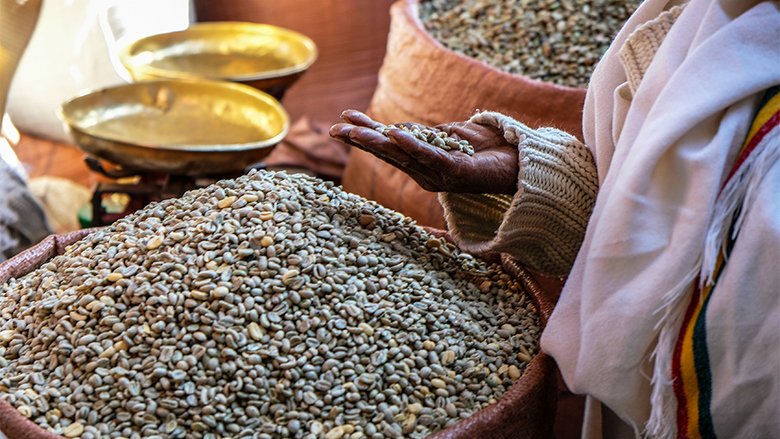This year, acute food insecurity is projected to reach a new peak, surpassing the food crisis experienced in 2007-2008. A combination of factors—including greater poverty and supply chain disruptions in the wake of the COVID-19 pandemic, the war in Ukraine, rising inflation, and high commodity prices—has increased food and nutrition insecurity. This is a multifaceted crisis, affecting access to and availability of food, with long-term consequences for health and productivity. The World Bank has scaled up its efforts to bolster food security, reduce risks, and strengthen food systems over the short and long term. Urgent action is needed across governments and multilateral partners to avert a severe and prolonged food crisis.
Declining food access and availability, with high risks
For most countries, domestic food prices have risen sharply in 2022, compromising access to food—particularly for low-income households, who spend the majority of their incomes on food and are especially vulnerable to food price increases. Higher food inflation followed a sharp spike in global food commodity prices, exacerbated by the war in Ukraine. Average global wheat, maize, and rice prices were respectively 18 percent, 27 percent, and 10 percent higher in October 2022 relative to October 2021.
At the same time, food availability is declining. For the first time in a decade, global cereal production will fall in 2022 relative to 2021. More countries are relying on existing food stocks and reserves to fill the gap, raising the risk if the current crisis persists. And rising energy and fertilizer prices—key inputs to produce food—threaten production for the next season, especially in net fertilizer-importing countries and regions like East Africa.
These trends are already affecting health. Stunting and wasting in children, and anaemia in pregnant women, are increasing as households are less able to include sufficient nutrition in their diets. A recent World Bank survey indicated that 42 percent of households across all countries covered were unable to eat healthy or nutritious food in the previous 30 days. These health effects carry long-term consequences for the ability to learn and work, and therefore escape poverty.
Globally, food security is under threat beyond just the immediate crisis. Growing public debt burdens, currency depreciation, higher inflation, increasing interest rates, and the rising risk of a global recession may compound access to and availability of food, especially for importing countries. At the same time, the agricultural food sector is both vulnerable and a contributor to climate change, responsible for one-third of global greenhouse gas emissions. And agricultural productivity growth is not staying ahead of the impacts of climate change, contributing to more food-related shocks. For example, an unprecedented multi-season drought has worsened food insecurity in the Horn of Africa, with Somalia on the verge of famine.
Managing the crisis and preparing for the future
The World Bank is responding to this escalating crisis with four areas of actions: (i) supporting production and producers, (ii) facilitating increased trade in food and production inputs, (iii) supporting vulnerable households, and (iv) investing in sustainable food security. It has made over $26 billion available for short- and long-term food security interventions in 69 countries, including active interventions in 22 of the 24 hunger hotspots identified as countries with the most pressing needs by the Food and Agriculture Organization and the World Food Programme. Since April 2022, the World Bank has disbursed $8.1 billion, approximately evenly split between crisis response and long-term resilience projects. In the short term, projects like the Emergency Project to Combat the Food Crisis in Cameroon will provide 98,490 beneficiaries with emergency food and nutrition assistance with support from the World Food Programme. In addition to supporting vulnerable households, governments of food-exporting countries can improve global food security by limiting measures like export bans and stockpiling of food. In the longer term, governments can make an enormous difference by repurposing public spending on agricultural policies and support for a more resilient and sustainable food system that directly improves health, economies, and the planet.
These actions and newly released funding underline the scale of the crisis. Timely, coordinated, and sustained action through partnerships such as the Global Alliance on Food Security can maximize the impact of new policies and funding, and mitigate the scale of the crisis. The time to act is now.

